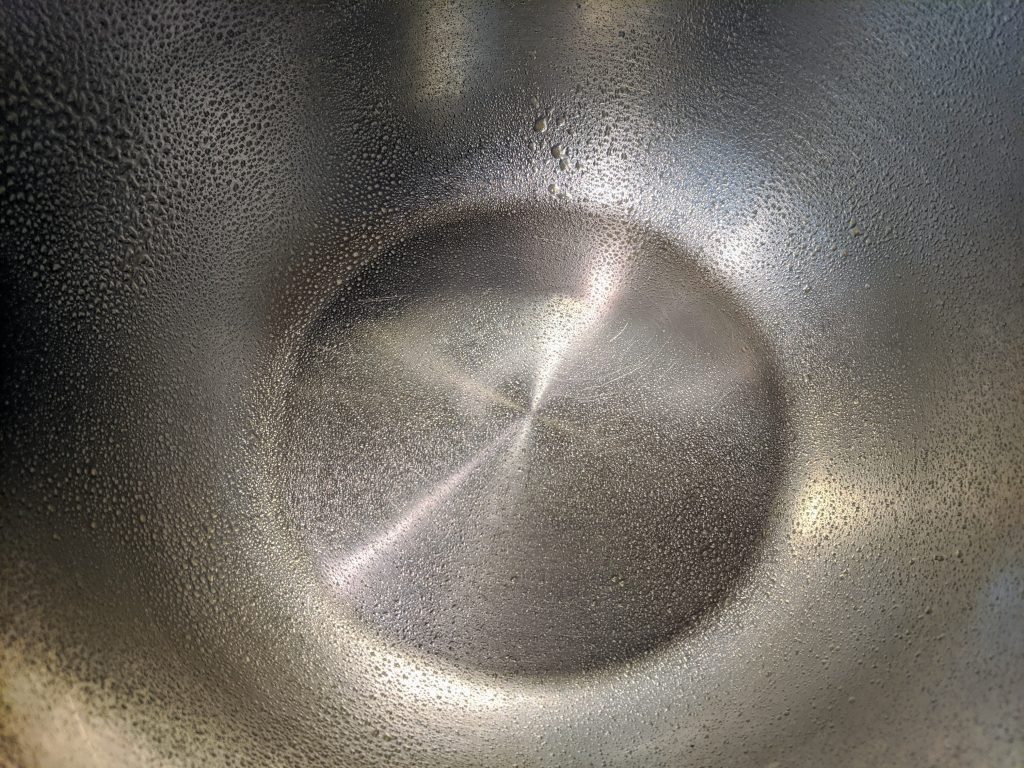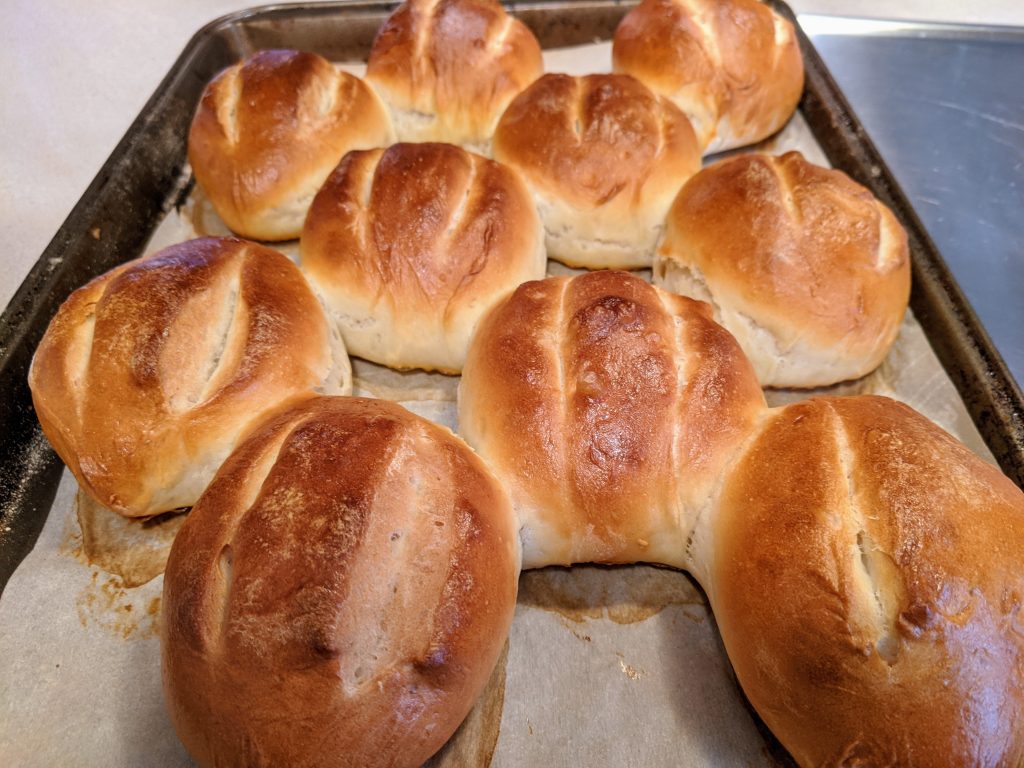
Melt some fat (lard, shortening, or here, butter) in a small pan or the microwave. You’ll need 1 tablespoon, so start with more than that. Let it cool, and then measure it as you add it to the dough.

Measure 4 cups of all-purpose flour, or weigh 520 grams.

Run water from your tap and use the thermometer to adjust the temperature until it is between 105° F and 110° F, and then measure 1-1/2 cups.

Sprinkle a packet of active dry yeast on top of the water and give it 5 minutes to start growing.
If you have instant yeast, just skip this step and the next one, and mix the water and yeast directly into the dough.

Stir the yeast into the water until completely dissolved.

Put the yeast solution, 1 tablespoon honey, 1 tablespoon melted fat, 1-1/2 teaspoon salt, and the measured flour into your mixer bowl and start the bread hook going.
If you don’t have a dough hook, you can do this with the paddle attachment, or by hand with a heavy spoon.

This is going to happen several times: When the ingredients crawl up the side of the bowl or stick to the bottom, out of reach of the hook, stop the mixer and use a flexible spatula to push all the way under to the center all around the bowl so that all the ingredients are all balled in the center, and then restart the mixer.

You measured the minimum amount of flour to allow you to adjust. When the dough sticks to the bowl or your fingers, add a spoon or two of flour and continue.

Keep adding flour until the dough doesn’t stick to the bowl. It will generally take a couple of heaping tablespoons, but you might have to add more.

Check the dough with your fingers. It should be soft, but not sticky. If it’s still sticky, add another spoon of flour.

Knead the dough with the dough hook 6 to 8 minutes until it’s smooth and bounces back when you poke it. If the dough crawls up the hook so much it’s just spinning around, stop the mixer, pull the dough completely off the hook, and restart it.
If you’re kneading by hand, knead approximately 10 minutes.

Spray the inside of a large bowl lightly with cooking oil spray.

Shape the dough into a ball, stretching the top repeatedly until it’s smooth, and tucking the stretched dough under, leaving it on the bottom. Give it a quick light spray of cooking oil. Cover the bowl with plastic wrap.
Wait one hour.

After an hour, the dough should have doubled in size. If not, it’s okay to give it a little longer.

Deflate the dough and weigh it.

Divide the dough into 10 pieces, each 1/10 the weight of the entire ball.

Roll the dough into 10 balls, using one hand to hold each ball and the other hand to stretch the top and tuck it under. Place on a parchment lined baking sheet with the smooth side up.
Wait 5 minutes

Shape the balls into “football” shapes about twice as long as they are wide.

Spray a piece of wax paper with cooking oil spray.

Cover the pan with the paper, oil side down and allow to rise.
Preheat oven to 400° F with rack in center position.
Wait until rolls are almost doubled in size, about half an hour.

Beat 1 egg with 1 tablespoon water.

Brush the tops and sides with egg mixture using a pastry brush.

Sharpen your knife specially for the next step.

Grease your sharpened knife.

Using the greased sharpened knife, put two parallel slashes deeply into each roll the long way.
Bake 20 to 22 minutes. The centers should reach 190° F on a quick-read thermometer.

The rolls should be golden brown when you remove them from the oven.

Allow to cool completely on a wire rack.